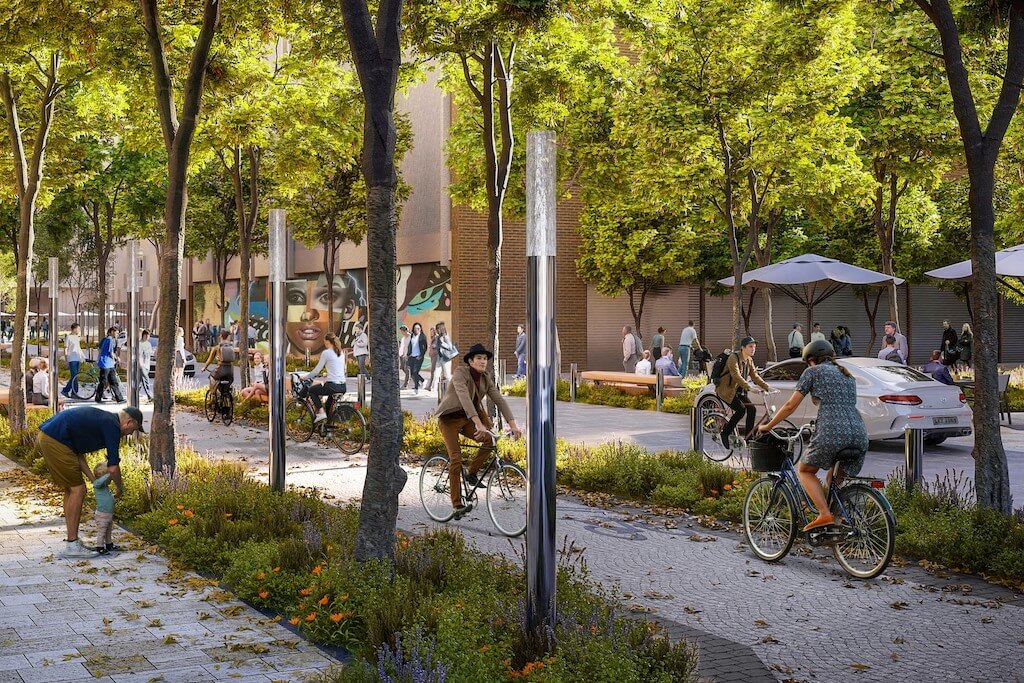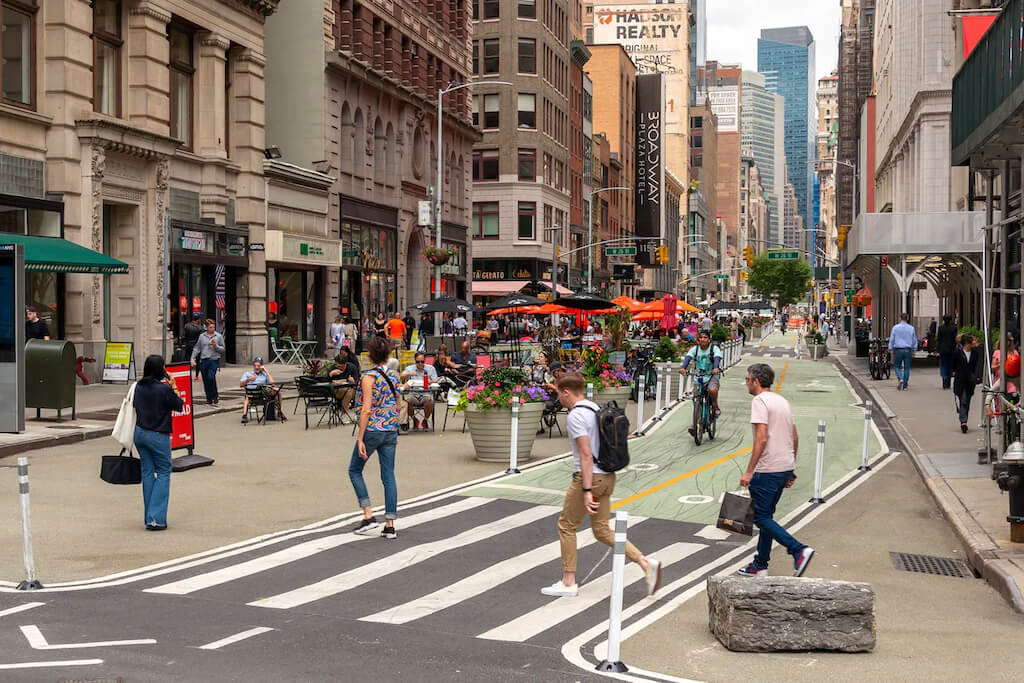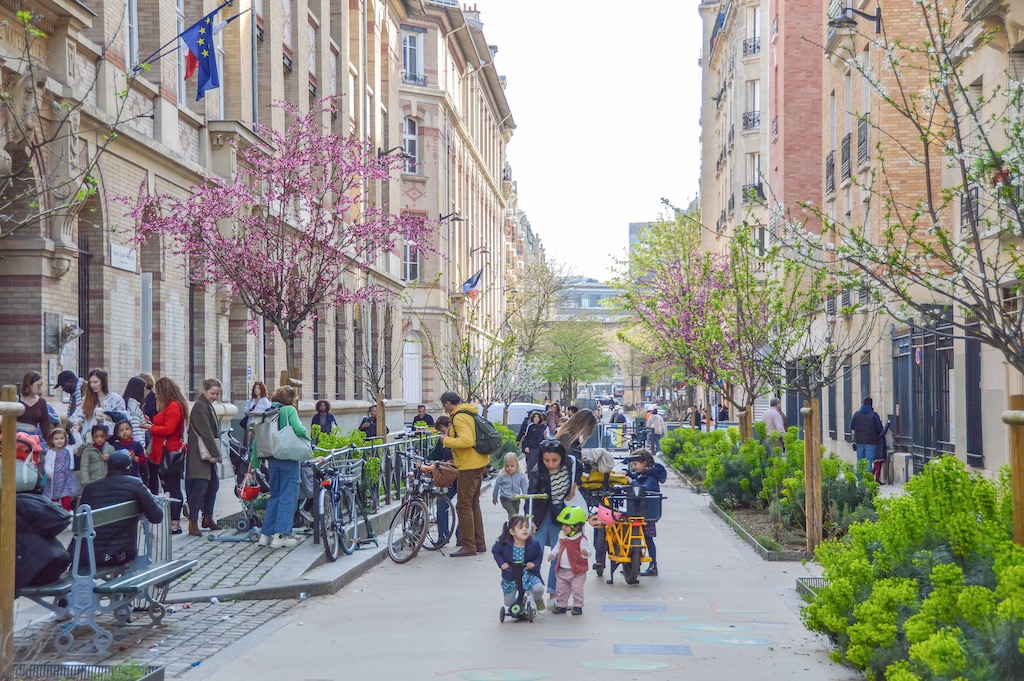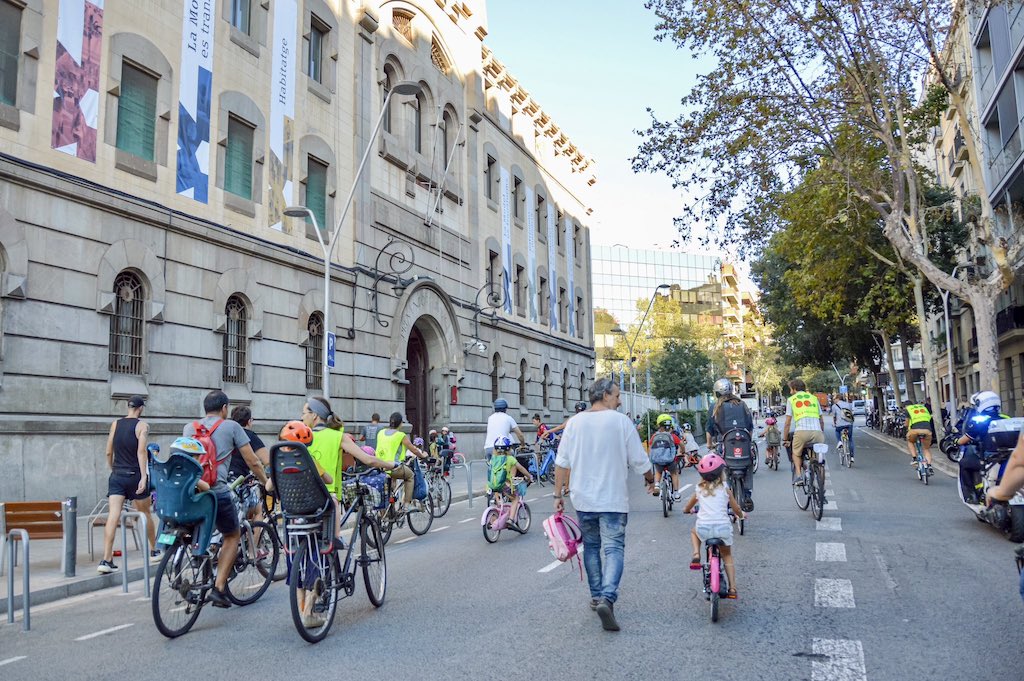Autumn Gear Guide
Find inspiration in our Gear Guide that will keep you out on your bike through wind or rain.
Download NowCity bicycling in the United States and around the world could be gearing up for an exciting transformation! Thanks to a fresh wave of funding and a renewed focus on equitable infrastructure, our cities are embracing a new chapter in urban mobility. With robust local advocacy and strategic coalition building backing these initiatives, the bipartisan […]
City bicycling in the United States and around the world could be gearing up for an exciting transformation! Thanks to a fresh wave of funding and a renewed focus on equitable infrastructure, our cities are embracing a new chapter in urban mobility. With robust local advocacy and strategic coalition building backing these initiatives, the bipartisan infrastructure law is not just reshaping our streets—it’s paving the way for safer, more accessible, and more inclusive urban environments.
Whether it’s fostering community-driven projects or supporting innovative approaches like bike buses and school streets, the future of urban cycling looks brighter than ever.
We checked in with two of our fave urban cycling experts in Chris Bruntlett from the Dutch Cycling Embassy and Maryann Aguirre, project director at People For Bikes.
In America, Aguirre says the bipartisan infrastructure law has introduced significant funding towards developing cycling infrastructure, with a strong emphasis on addressing the needs of underserved communities.
She highlights the intent behind this funding, saying, “It’s investing in transportation projects and transportation infrastructure that helps mend together communities.”

Columbus, Ohio
Programs such as the Reconnecting Communities and the Safe Streets and Roads for All are at the forefront of these efforts, focusing on reconnecting communities and enhancing road safety with equitable investments.
These programs are competitive grants that local communities, states, or metropolitan planning organizations can apply for.
“Now that focus, a large part of that focus, is shifting to active transportation projects, like bike projects,” she says. “This shift is not just about building infrastructure but also healing the past infrastructural neglect that disproportionately affects lower-income areas.”
While federal funds lay the groundwork, local advocacy and coalition building are crucial in actualizing these projects. The effectiveness of local advocacy can significantly impact the implementation and success of cycling infrastructure projects.
“We don’t encourage folks to lead with bikes necessarily in their messaging,” Aguirre says. “But [we found] leading with values and issues that everybody can relate to that don’t isolate folks who don’t ride bikes.”
Building a broad coalition is another essential strategy. By aligning with groups that may not primarily focus on cycling but share similar goals—such as public transportation advocates or climate justice groups—bike advocates can strengthen their influence and outreach.

Broadway, NYC
“Coalition building is one of the most critical parts of effective local advocacy,” Aguirre explains. “And that means developing a much more diverse, deep bench of who you consider to be bike advocates.”
The federal recognition of the need for protected bike lanes has encouraged local and state planners to adopt these safer facilities. The progress from traditional bike lanes to more protected and separated facilities signifies a major advancement in urban cycling infrastructure.
Reflecting on the trend, Aguirre says, “It’s becoming much more mainstream…almost every city in America has a protected bike lane now.”
Government funding for active transportation is growing trend around the world. The most effective is in Europe where funding is directly connected to climate commitments and trickles down from the highest level to the local level where governments must advance this agenda. This is best demonstrated through the recent signing of the European Cycling Declaration.
“This is a key milestone for cycling,” said Jill Warren, CEO of the European Cyclists’ Federation. “We are delighted that the Declaration reflects many of ECF’s longstanding advocacy and policy demands aimed at increasing and improving cycling in Europe, such as creating more and better cycling infrastructure and encouraging inclusive and affordable mobility. This is an excellent framework for enabling many more Europeans to cycle – and to cycle more safely.”

Projection in Glasgow, Scotland courtesy of Cycling UK
In recent years, urban centers around the globe have faced significant challenges in expanding cycling infrastructure, a phenomenon often referred to as bikelash. Political support for long-term cycling projects can be volatile, threatening the progress of city-wide cycling networks.
Chris Bruntlett, a noted urban cycling advocate, sheds light on innovative strategies that circumvent these barriers by focusing on the younger generation.
As cities confront the backlash against new bike lanes and cycling infrastructure, the conversation is being strategically shifted towards the benefits for children.
“While many global cities struggle with the challenge of bikelash, and long-term political capital suddenly running dry, the task of getting more children cycling is providing the short-term breakthrough needed in such a hostile climate,” Bruntlett says.

Paris school street (Dutch Cycling Embassy)
This focus on children not only garners wider community support but also reframes the conversation in a less confrontational way. By centering on younger city dwellers, these initiatives touch on universal concerns about safety and future generations, making it a less controversial approach.
Bruntlett highlights two specific measures that have quickly gained popularity: the bike bus and school street.
The bike bus involves groups of children cycling together on a set route, supervised and structured for safety. He describes it as a way “that allows children to cycle safely together in a scheduled, structured, and supervised format.” This initiative not only promotes cycling among children but also provides peace of mind for parents concerned about traffic and safety.
Similarly, the “school street” scheme temporarily closes streets to motor vehicles outside local schools at key times. This initiative creates a safe environment for children to engage in active travel, enhancing their physical health and social interaction. Bruntlett notes the impact of such measures, explaining, “In a very short period of time, these light, quick, cheap initiatives have proved to be immensely popular—both in their neighborhoods and on social media.”

Barcelona bike bus
These child-focused strategies have broader implications for urban planning and community priorities. By successfully implementing such initiatives, communities begin to rethink their urban spaces and transportation policies. Bruntlett passionately argues for the inclusion of the younger demographic in urban planning.
“The future of cities belongs to its children, and this new movement just might prove to be a vital tipping point where they are finally considered and involved in the planning process,” he says.
Efforts to increase urban cycling are focusing on young riders, using innovative approaches like “bike bus” and “school street” schemes to overcome challenges such as dwindling political support and public resistance. These initiatives, which prioritize safety and community engagement, demonstrate the potential of tailored, local solutions in creating cycling-friendly environments.
Simultaneously, federal initiatives to fund and enhance cycling infrastructure support these local efforts, pointing towards a transformative era in urban cycling. This combined approach promises not only safer and more accessible streets but also a shift towards more sustainable and inclusive urban communities, with the needs of the next generation at the forefront.
Find inspiration in our Gear Guide that will keep you out on your bike through wind or rain.
Download Now


Leave a comment